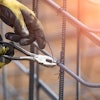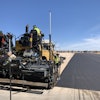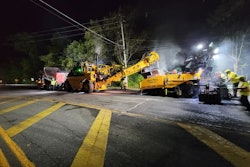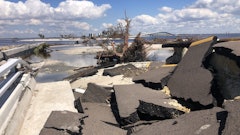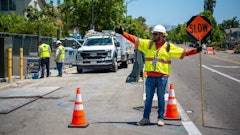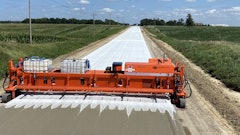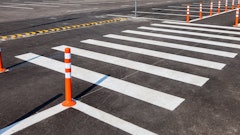Watch October 29th's episode of Hops & Highways as Jess & Dormie break down the road building news of the week. Thanks for joining us.
J: I feel like the infrastructure bill topic is like the pandemic talk of last year. We just want it to pass so we can move on with our lives! But unfortunately, House leaders were unable to come to an agreement that would allow the vote for the $1.2 trillion Infrastructure Investment & Jobs Act to come to the House floor. This is the third time this month the bill has been punted, despite an appeal from President Joe Biden earlier yesterday to pass the measure before he departed on an overseas trip. The delay was due to a voting block of dozens of progressive Democrats who continued to withhold their support for the infrastructure measure until a separate, much larger, social spending package is also teed up for a House vote. Congressional leaders left Washington for the weekend with much work left undone.
D: Fortunately before they left, the House passed a second temporary extension of the Highway Trust Fund, ensuring that 3,700 federal employees will not be furloughed. It was set to expire on Oct. 31. Peter DeFazio (Democrat-OR) said earlier in the day that (quote) "Short term extensions are highly disruptive of transportation project planning and delivery carried out by States and State Departments of Transportation.” (unquote)
J: A five-year surface transportation reauthorization, which transportation and construction groups much prefer to short stopgaps, is a central element of the broader infrastructure package. The new extension will last until Dec. 3. That’s right. Dec. 3. The same day that federal government funding expires and the U.S. is estimated to hit its debt limit. Though House Democratic leadership had intended to bring the bipartisan infrastructure plan to the floor for a vote this week, the plan that would renew highway funding for another five years, the House left that legislation – as well as the broader Build Back Better social spending package – pending until they return next week.
D: When this temporary extension ends on Dec. 3, it will mark the six-year anniversary of the FAST Act’s original passage out of Congress in 2015. Legislators cannot continue granting extensions from month to month using funding estimates from the previous decade without causing uncertainty for workers and business owners in the communities they are elected to serve.
J: The bipartisan Infrastructure Investment and Jobs Act would inject $550 billion into surface transportation infrastructure, an increase of 55 percent over current levels, providing a predictable funding stream for improving the safety and efficiency of highways, roads, and bridges across the country. This is legislation our industry sorely needs and we will drink to that.
:::WE DRINK:::
D: The hold up for the passage of the infrastructure bill was the initial price tag of Biden’s $3.5 Build Back Better program Democrats plan to pass through reconciliation. The Build Back Better framework, which Biden formally announced in remarks at the White House yesterday, has some construction-related provisions, including billions of dollars for affordable housing and resilience against natural disasters, plus money for passenger rail, federal buildings and highway funding to reconnect neighborhoods divided by highways.
J: At $1.85 trillion, the new proposal is scaled back sharply from an earlier $3.5-trillion plan. Among the provisions that didn’t make the cut are plans for family leave for workers and a proposed $250-billion clean energy performance program. That program would provide grants to electric utilities that increase the clean-energy share of total electricity supplied. But significant climate-related provisions remain in the plan.
D: Biden said that the framework includes “the largest effort to combat the climate crisis in American history” and it would result in reducing greenhouse gas emissions by more than one billion metric tons in 2030. A White House summary estimates the measure's climate funding and other assistance at $555 billion.
J: Also in the bill is funding for a variety of other infrastructure programs, including $9.8 billion for a joint Housing and Urban Development and Federal Transit Administration program for grants to provide access to federal housing and increase mobility for residents and passengers. There’s also about $1 billion in federal highway grants in the bill for projects that result in carbon reductions and, as Jeff Davis, a senior fellow with the Eno Center for Transportation noted on Twitter, $10 billion for passenger rail.
D: To pay for this larger framework, Biden is proposing several new revenue-raisers, including a 15% minimum tax on corporations’ income, which the White House estimates would raise $325 billion. There also would be a 1% surcharge on corporate stock buybacks, raising $125 billion; and a tax surcharge on the income of the wealthiest 0.02% of individual taxpayers. That is estimated to raise $230 billion.
J: But for construction industry groups, the social-policy measure's major importance is that it is the key to unlocking the infrastructure package. The IIJA cleared the Senate on Aug. 10 on a strong, bipartisan vote. But it has been held hostage by the House as liberal Democrats have held up a floor vote in that chamber, seeking to have the Build Back Better measure agreed to as well.
D: Democrats hold thin margins in both chambers of Congress, but the negotiations leading up to Biden’s framework announcement displayed the divisions between Democrats’ centrist and progressive wings. We just want everyone to get along and pass the bill so we can start talking about the work you’re all doing with the money! Let’s drink to that!
:::WE DRINK:::
J: Work zone safety is a topic we will always discuss because it’s so important to raise awareness of the dangers surrounding our work zones and ways we can help keep you all safe out there. In 2018, there were 1,804 work zone crashes in Pennsylvania, resulting in 23 fatalities. 43 percent of those work zone crashes resulted in fatalities and/or injuries. With increases in distracted driving and continued speeding in work zones, additional safety measures are necessary.
D: In 2017, the state developed the Automated Work Zone Speed Enforcement program. The program installed cameras along work zones with the hope that they would reduce work zone speeds, change driver behavior and improve work zone safety for workers and motorists. These portable systems, which are either vehicle- or other apparatus-mounted, detect and record vehicles exceeding work zone posted speed limits by 11 miles per hour (mph) or more using electronic speed timing devices. Violations are then automatically issued to drivers.
J: This week, the Pennsylvania DOT announced they had issued more than a half-million speeding violations in Pennsylvania construction zones since the state began using work zone speed cameras last year. In the nine months that the cameras operated last year, they recorded more than 219,000 violations statewide and $1.7 million in fines. In the first nine months of this year, violations are up 45% to more than 317,000 and fines more than doubled to $3.6 million.
D: The state of New York will also be installing cameras in road work zones that will monitor drivers to make sure they’re not speeding. If they are, the camera alone could result in a ticket. States hope drivers will be more aware of the cameras and reduce speeds in work zones automatically to avoid tickets, and keep you all safe. Let’s drink to that!
:::WE DRINK:::
J: Finally today, we have a really cool project to share with you guys for Build America Friday. We love racetrack paving projects because the intricacies and project specifications are so tight that we really see the best of the best paving there is. Right now, the Atlanta Motor Speedway is getting a makeover and the process is really cool to watch. The 1.54-mile track featured the oldest asphalt racing surface the NASCAR Cup Series visited this year and the team at AMS and Sunmount Paving Company had their work cut out for them.
D: Crews have been working to remove the old surface of the track and have been paving the new course this week. Following 10 months of research, development, testing and simulation with engineers and iRacing, the reprofile of Atlanta Motor Speedway will increase the current 24-degree banking in Atlanta’s turns to 28 degrees — higher than any other intermediate track on the current NASCAR circuit. Check out this video clip of the paving.
J: During the construction and paving of this course, the machines have had to use stabilizers to keep them in place while paving these banking turns. Equipment that was made to pave on flat ground, is being held in place at a 28-degree bank. All told, about 17,000 tons of material will be used to bring the all-new Atlanta Motor Speedway to life. This video is courtesy of the Atlanta Motor Speedway and we’re going to have full coverage of this project in our January issue to stay tuned for more.
D: That’s all we have for you today, as your seasons start to wrap up, be sure to send us the projects you worked on over the summer for a future shoutout in our Build America Friday segment.
J: We hope to see you next week and until then, stay safe out there!
